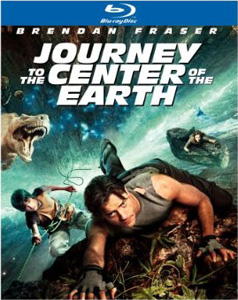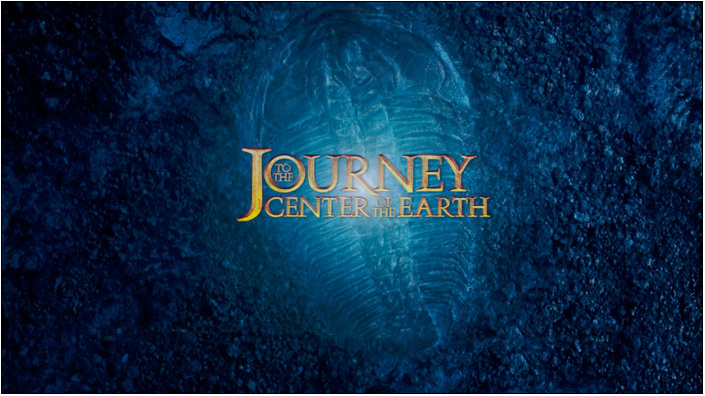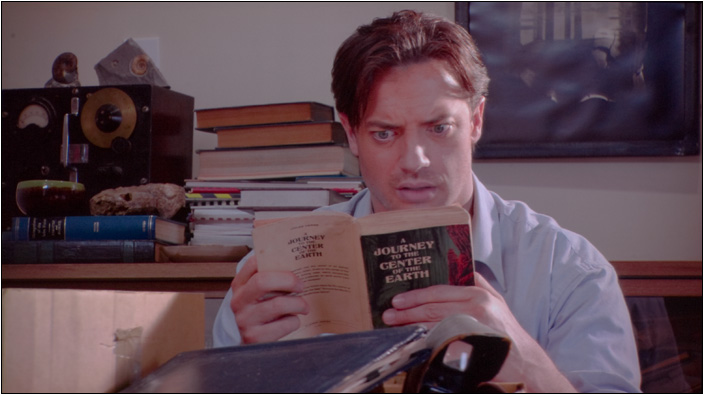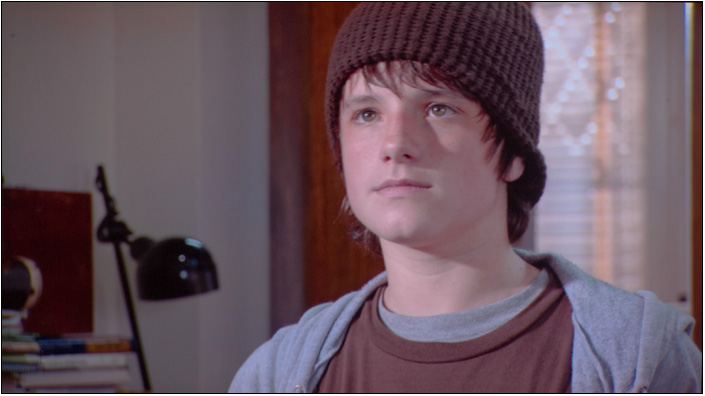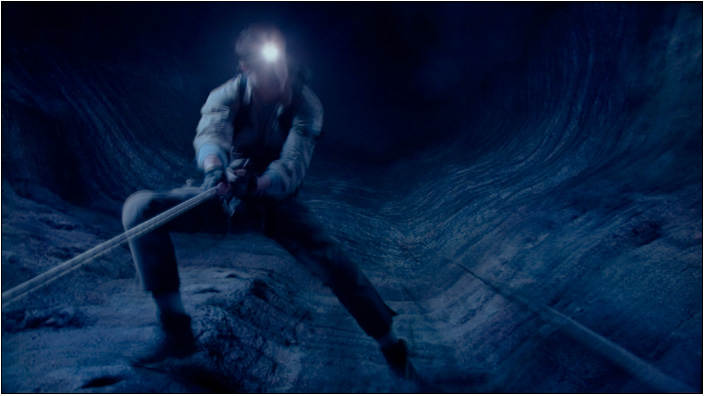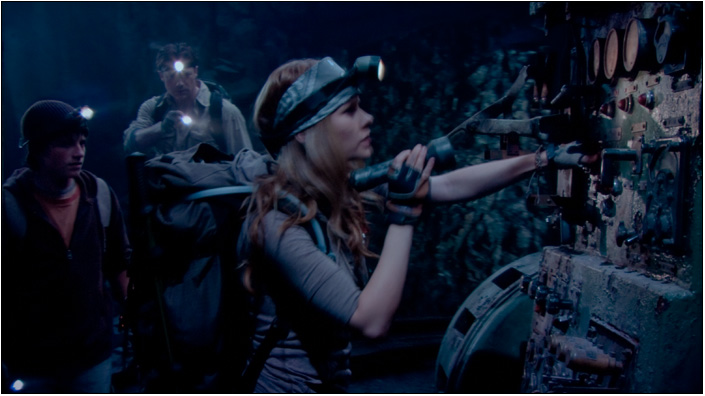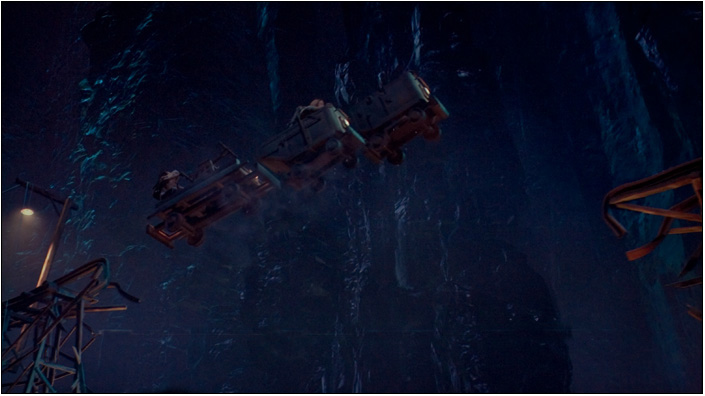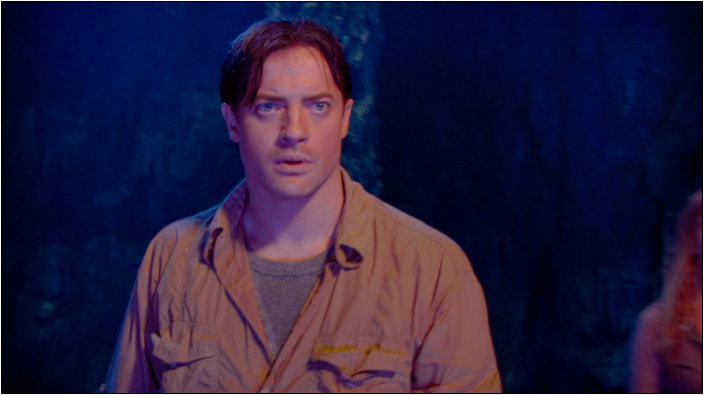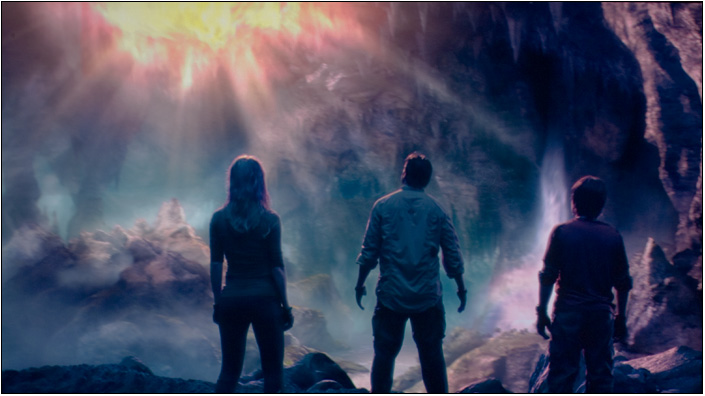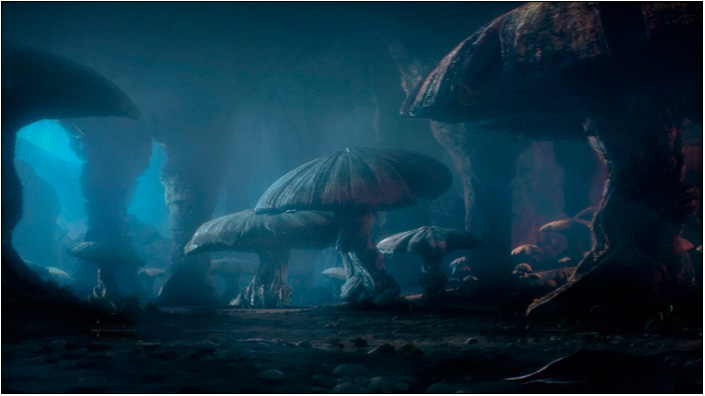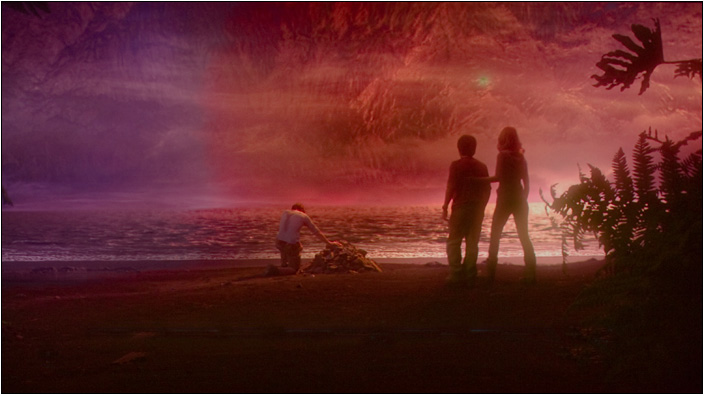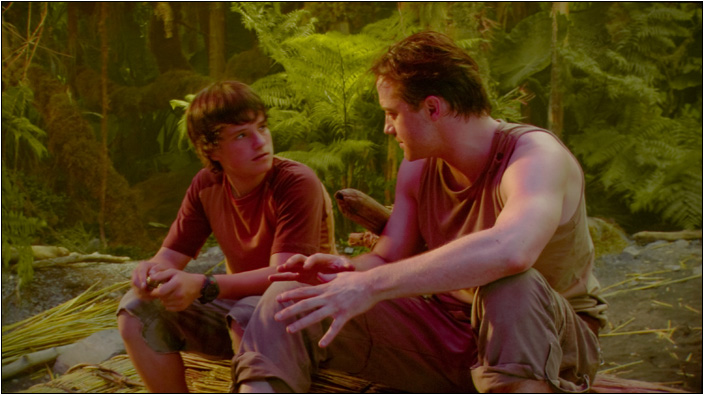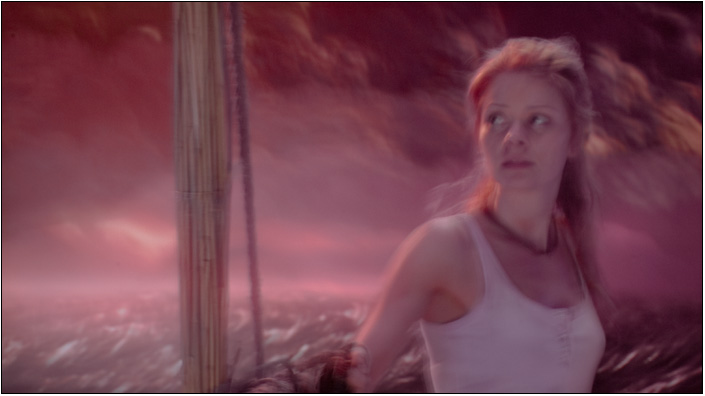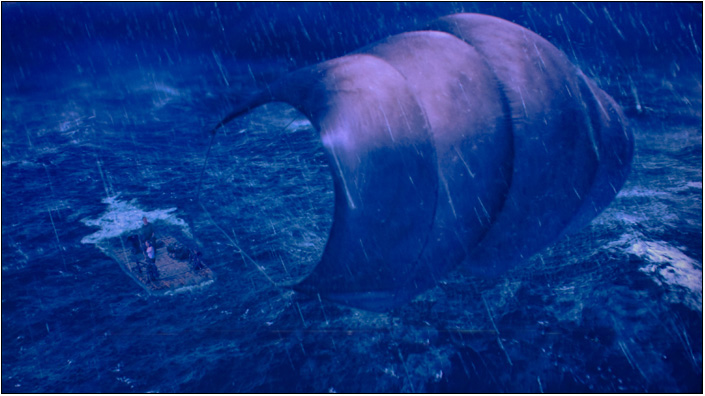Review by Leonard Norwitz
Studio:
Theatrical: New Line Cinema & Walden Media
Blu-ray: New Line (Warner Home Video)
Disc:
Region: A
Runtime: 92 minu
Chapters: 21
Size: 50 GB
Case: Standard Amaray Blu-ray case
Release date: October 28, 2008
Video:
Aspect ratio: 1.85:1
Resolution: 1080p
Video codec: VC-1
Audio:
English DD 5.1. Dub: Spanish DD 5.1
Subtitles:
English & Spanish
Extras:
• Bonus disc: Digital Copy
• 2D and 3D versions of the feature film
• 4 pairs of 3D glasses
• Commentary with Actor/Producer Brendan Fraser and
Director Eric Brevig
• Featurette: A World Within a World (10:09)
• Featurette: Being Josh (06:00)
• Featurette: How to Make a Dinosaur Drool (2:47)
The Film:
5
You know you're in trouble when you long for Pat Boone
and a goose instead of Brendan Fraser. Fraser's about an
amiable an actor as you'll find these days, but very
little about this very latency age-targeted movie got my
attention. Correct that: I certainly sat up when a T-Rex
came out of nowhere to try his little hands and drooling
jaws on our hapless heroes. I wondered: where, in all
this desert, he (or she) had been feeding for lo these
millennia?
Comparisons to Fox's effects showpiece from 50 years ago
are inevitable. The earlier picture was clearly targeted
for family entertainment, but the new one is aiming for
a still younger audience: Of the three principals, one
is a 12-year old boy (there are no children on the 1959
expedition), and the suspense has such a light touch as
to work against itself.
Sorry, I keep forgetting to summarize the plot, so here
goes. Like the 1959 movie, much is owed to the Jules
Verne novel, and there are a number of bits of plot and
hommages to the first movie, most obviously the seismic
picture that drives both expeditions to Iceland. Here,
Brendan Fraser plays Trevor Anderson, a science
professor at a small university in Montreal. He still
has nightmares about his older brother, Max, who was
lost nine years earlier while exploring volcanoes in
Iceland. Trevor's nephew, Sean (Josh Hutcherson), is
dropped off by his mother for an overdue visit. They
haven't seen each other in years, but bond quickly once
they start exploring a suitcase full of Max's stuff that
Sean's mom brought with her to leave with Trevor.
One thing leads to another and the next thing we know
Trevor and Sean are on their way to Iceland to follow up
on propitious seismic clues. It's not that either of
them believe that the earth is hollow, as, apparently,
Max did, but once they and their lovely guide, Hannah
Ásgeirsson (Anita Briem) are dropped, like Alice, down a
hole that goes on forever, it's hard for them not to
wrap
their minds around the implications. The challenge, as
it was in 1959, is getting back to touch the sky.

Journey to the Center of the Earth was shown in theatres
in a 3D version, about which nothing is said in the
special features. What little discussion there is about
is left for the commentary. The hope of the producers is
that the movie is more than its special effects, that we
will engage with the characters and their drama and have
some fun along the way.
Image:
7/8
The first number indicates a relative level of
excellence compared to other Blu-ray video discs on a
ten-point scale. The second number places this image
along the full range of DVD and Blu-ray discs.
I don't know the extent of how the shooting of this
movie was dictated by the requirements of a 3D
presentation – none of the extra features, including the
commentary, address this most important of technical
aspects, but assuming the movie was shot only once and
formatted in post-production, it has a very peculiar
look in 2D: Most scenes, above and below the surface,
are overlit, creating a flat, non-dimensional effect.
Some backgrounds never come together, and focus is
occasionally problematic. In 3D, the perspective of
objects in the foreground, especially if they're moving
toward the camera, becomes unnaturally distorted and
distended. Objects within a layered perspective appear
detached from their context (as in the roller coaster
ride), though the dimensionality is often astonishing.
Color is desaturated and shifts to yellow - but not a
major problem underground since color is "unnatural"
anyhow.
Glasses are not the same as for the Disney 3D blu-rays
and may not be the same as for the theatrical
presentation.
One final note about the 3D image: I read in Wikipedia:
RealD uses a single projector that alternately projects
the right-eye frame and left-eye frame, and circularly
polarizes these frames, clockwise for the right-eye and
counterclockwise for the left-eye, using a
liquid-crystal screen placed in front of the projector
lens. Circularly polarized glasses make sure each eye
sees only "its own" picture, even if the head is tilted.
The very high frame rate, which is 72 frames per second
per eye, makes sure the image looks continuous. In RealD
Cinema, each frame is projected three times to reduce
flicker, as the source video is usually 24 frames per
second. The result is a seamless 3-D picture that seems
to extend behind and in front of the screen itself.
http://en.wikipedia.org/wiki/Real_D_Cinema It was the 72
fps that caught my attention. My display isn't capable
of taking advantage of Blu-ray's multiple 24 fps
possibilities, but I wondered for those of you that have
such capability if the 3D image looks markedly better
because of it? In any case, I felt it was the preferred
viewing experience with large screen front projection.
Audio & Music:
6/5
Without a doubt, the greatest loss in comparison to the
1959 movie is Bernard Hermann's score, which,
inexplicably, was not nominated for an Academy Award
(not that anything could have had a chance against Ben-Hur).
The movie was nominated for Best Sound, however, which
is yet another instance of how far we have fallen in 50
years. I popped in Fox's 2006 DVD just for the hell of
it: Even in basic surround, the DVD sounds vivid,
despite the distortion under the credits. But from there
on, the sound is remarkable. Hermann's music enhances
the movie's drama and effects at every turn, captivating
our imagination. Under Hermann's guidance, we are
anxious that our explorers may not actually return to
the surface; whereas Andrew Lockington's score feels
routine. The center of the Earth is where no man has
gone before – well, almost no man, but you'd never know
it from this new music.
Apparently New Line, or Warner, or whomever is
responsible for this Blu-ray didn't think enough of the
music either, for the audio mix is a mere Dolby Digital
5.1. I doubt an uncompressed audio would have made it
any more magical, but it might have given the dialog a
sporting chance. I thought it flat and muffled compared
to your average movie these days.
Operations:
5
I found it particularly difficult to navigate between
the 2D and 3D versions. To look at the menu, you'd think
it would be easy, but my experience was not so. When I
clicked on the alternate "D" sometimes the menu would
vanish, but the format would remain the same.
Extras:
3
The highlight here is the 10-minute featurette: A World
Within a World that explores various rational
hollow-earth theories of the last few centuries. I found
it fascinating and a better ride than the movie. "Being
Josh" is a brief video diary of 12-year old Josh
Hutcherson as he prepares for a scene, gets home
schooling with his tutor, and acts on the set. Strictly
kid stuff and, as such, grounds some of the movie in a
kind of reality.
Branden and Eric's commentary covers how many of the
shots were set up and how the cast and crew got along,
but for the most part, it reads like two guys watching
their home movies: "Now here we are at the lab, or here
we're comparing notes, or in a 3D moment" – about which,
from a technical point of view, they have absolutely
nothing to say, except that it was accomplished with a
"digital body camera with twin lenses" and that such and
such a 3D moment is really cool. What I wanted to know
is how 3D shot is the first place, what allowances in
set design and lighting must be made for it, and whether
there is a difference between the master for the theater
audience and what is transferred to Blu-ray? It would
have been nice to learn about these things without
having to resort to Google. What a letdown.
|
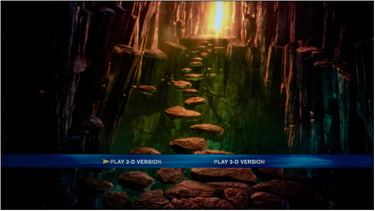 |
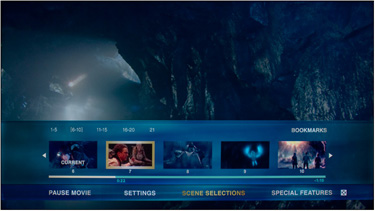 |
|
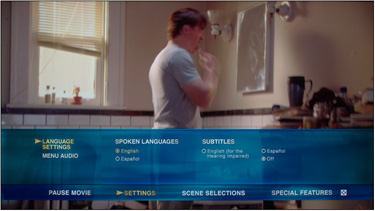 |
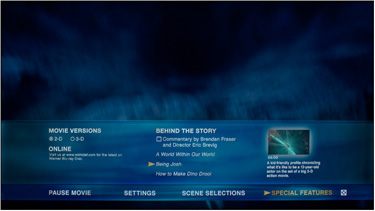 |
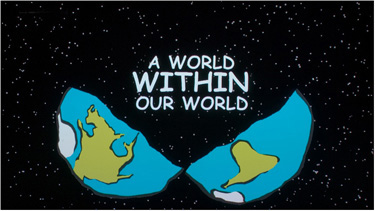 |
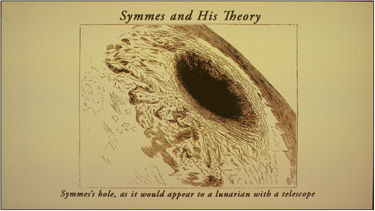 |
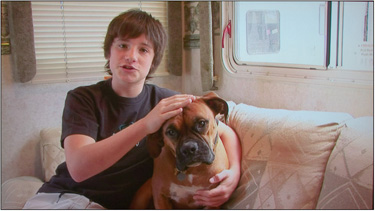 |
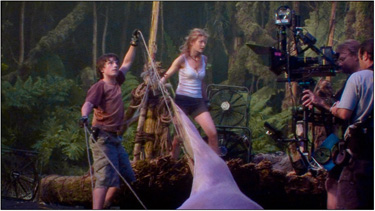 |
Bottom line:
5
A fun, harmless movie that never approaches the
emotional drive of the 1959 movie with James Mason, Pat
Boone, Arlene Dahl and a goose. But for its target
audience, there is sufficient story, funny bits and
excitement to keep the attention and have a good time.
The 2D image doesn't do the format justice, nor does the
audio, but the 3D image is worth a look.
Leonard Norwitz
October 22nd, 2008
![]()
![]()

![]()
![]()
![]()
![]()
![]()
![]()
